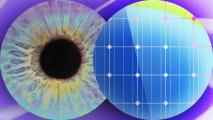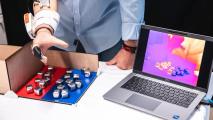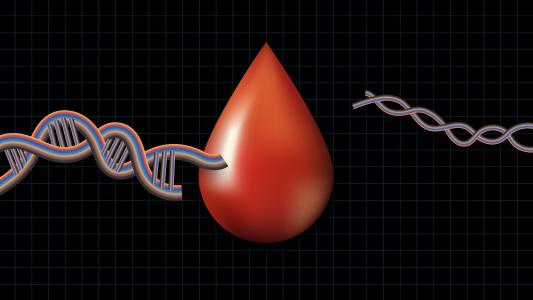No more cords: one day an entire room may power up all your devices
This article is an installment of The Future Explored, a weekly guide to world-changing technology. You can get stories like this one straight to your inbox every Thursday morning by subscribing here.
Charging rooms may free us from the tangle of cords needed to power our electronic devices.
What they are: Last month, researchers at the University of Michigan and University of Tokyo announced that they developed a way to safely deliver electricity through the air.
This breakthrough could eventually lead to “charging rooms” — wireless charging areas that can give your electronics extra juice. All you’d have to do is walk into the room — no cords or power outlet needed.
Why it matters: The obvious benefit to charging rooms is that we could kiss the gazillion charging cables we have on the countertop goodbye.
“This really ups the power of the ubiquitous computing world — you could put a computer in anything without ever having to worry about charging or plugging in,” said Alanson Sample, University of Michigan professor and author of the study.
But charging rooms would be more than a convenient way to charge our iPhones — they could open up more possibilities for mobile robots and sensors to seamlessly function without needing human interaction.
For example, scientists and entrepreneurs are working on decking out spaces that can interpret and respond to how we feel (for instance, by turning down the thermometer if we’re too hot or dimming the lights if we have a migraine). Continuously charging sensors could make these personalized rooms a reality.
Charging rooms could open up more possibilities for mobile robots and sensors to seamlessly function without needing human interaction.
Medical devices could also benefit from charging rooms.
“Today’s heart implants, for example, require a wire that runs from the pump through the body to an external power supply. This could eliminate that, reducing the risk of infection and improving patients’ quality of life,” Sample said.
“I can imagine this being really useful for highly instrumented, expensive spaces like, for example, an operating room,” he told Scientific American, “where you can imagine having various instruments and devices just be able to be powered without needing cords.”
How it works: The rooms work similarly to your wireless docking station — a metal coil within a changing magnetic field produces an electric current.
The researchers built a small room, approximately 10 feet by 10 feet, made out of aluminum panels. The room also had a metal pole running down the middle.
“I can imagine this being really useful for highly instrumented, expensive spaces like, for example, an operating room.”
Alanson Sample, University of Michigan
The room was furnished with a wirelessly powered lamp, fan, and smartphone. (The devices all had a metal coil in them, which can easily be integrated into any device.) There was also traditional furniture: a chair and table.
The team was able to produce 50 watts of power throughout the entire room, charging all the wireless devices.
In order to ensure there were no dead zones, the system generated two separate 3D magnetic fields: one that moved around the room’s center pole and the other that traveled to the corners.
“Drawing power over the air with a coil is a lot like catching butterflies with a net,” Sample said. “The trick is to have as many butterflies as possible swirling around the room in as many directions as possible. That way, you’ll catch butterflies no matter where your net is or which way it’s pointed.”
Next steps: The team is working to test the system in a building on the University of Michigan campus, and the project is expected to be completed this fall.
Still, you’re not likely to walk into a charging room anytime soon — that could take years.
“It’s just too burdensome to put aluminum sheets all over your walls — that benefit doesn’t make sense yet,” Sample told SciAm. “We’ve just developed a brand-new technique. Now we have to go figure out how to make it practical.”
We’d love to hear from you! If you have a comment about this article or if you have a tip for a future Freethink story, please email us at [email protected].






